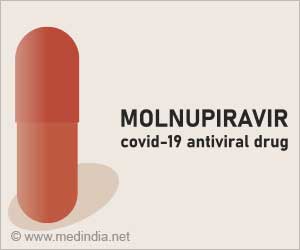- Trichomoniasis is a common sexually transmitted infection (STI) caused by the protozoan Trichomonas vaginalis
- Infection with T. vaginalis is curable; however, it is linked to a high risk of acquiring HIV
- Metronidazole, the existing treatment drug, has high breakthrough rate. Study being conducted to find if Secnidazole will be a better drug
An innovative research initiative is being conducted to discover a more effective treatment for trichomoniasis. This infection is the most prevalent, curable, sexually transmitted infection (STI) globally, yet often goes unnoticed. Scientists at Tulane University are spearheading this study (1✔ ✔Trusted Source
Trichomoniasis
).
The five-year, multi-center research project is supported by a $9.2 million grant from the National Institutes of Health. It aims to evaluate the efficacy of a newly approved drug, secnidazole, in comparison to the existing standard treatment, metronidazole. This study will involve a cohort of 1,200 participants from Louisiana, Alabama, and Florida. Although metronidazole has been the primary medication for trichomoniasis for decades, it still shows a 10% breakthrough rate in treatment outcomes.
“More than 10 percent of people who take the recommended treatment still have it. That is just unacceptable. We need better options” said Dr. Patty Kissinger, professor of epidemiology at Tulane School of Public Health and Tropical Medicine. “The problem is trichomoniasis is the most common treatable STI, but there are often no symptoms, and the CDC has not recommended screening among asymptomatic people, so the public doesn’t know about it.”
Trichomoniasis, Its Symptoms and Complications
Trichomoniasis is a prevalent infection affecting approximately 156 million individuals globally each year. It is caused by the protozoal parasite Trichomonas vaginalis, which flourishes in the genital tract of both males and females, leading to inflammation.
While most infections remain asymptomatic, over 50% of women infected with Trichomonas vaginalis experience white, yellowish, or greenish vaginal discharge, and approximately 10% of men exhibit symptoms of urethritis.
Individuals infected with this parasite exhibit a 1.5-fold increased risk of contracting HIV. For pregnant women, trichomoniasis can result in preterm labor and elevate the risk of perinatal complications. Furthermore, African American women are four times more likely to be affected by trichomoniasis compared to other demographics (2✔ ✔Trusted Source
About Trichomoniasis
).
“Trichomoniasis affects millions but remains a highly neglected STI,” Kissinger said. “We’re hoping this study leads to better treatment options and increased awareness that we hope will encourage more screening.”
Advertisement
Due to insufficient inclusion in STI screenings and minimal symptoms, individuals who are infected may remain unaware of their trichomoniasis for several years.
This represents the third study within a series funded by the National Institutes of Health (NIH) aimed at enhancing the treatment of trichomoniasis. It is noteworthy that this study is the first in the series to incorporate male participants. Furthermore, it is the first study comparing the efficacy of secnidazole against metronidazole.
Advertisement
Why Secnidazole Medication Is Better Than Metronidazole?
There are still unanswered questions regarding the persistently high breakthrough rate associated with metronidazole. Previous studies conducted by the NIH indicated that metronidazole achieves optimal effectiveness when given in multiple doses. However, the elevated breakthrough rate may be linked to patients either missing doses or engaging in sexual activity with partners prior to the completion of their treatment, thereby continuing a cycle of reinfection.
In contrast, secnidazole treatment includes only a single dose; however, concerns regarding the medication’s cost persist, as noted by Kissinger.
Trichomoniasis impacts over 3 million individuals in the United States, with a notably high prevalence in the Deep South, the region where the research is taking place.
“We need better treatments for this STI,” Kissinger said. “If this is successful, we could control it and encourage more screening that could reduce perinatal morbidity and maybe even reduce the chances of some people getting HIV.”
References:
- Trichomoniasis – (https://www.who.int/news-room/fact-sheets/detail/trichomoniasis)
- About Trichomoniasis – (https://www.cdc.gov/trichomoniasis/about/index.html)
Source-Medindia



